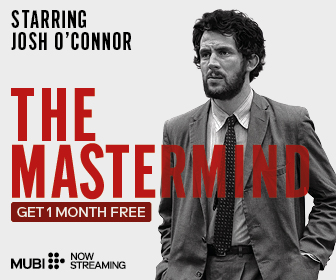Luc Besson’s “Lucy” (2014) begins as a visceral noir-tinged thriller and ends somewhere between a speculative sci-fi and a meditative tone poem. It’s as if the film itself cries out the name of its protagonist, charting their metamorphosis from flesh to cosmos, from mortal sinew to pure algorithmic essence. The film portrays Lucy (Scarlett Johansson), an American student in Taipei who is tricked by a sleazy man whom she was supposedly dating for a week into delivering a briefcase of synthetic drugs, and is subsequently captured by Korean gangsters.
Forced into becoming a drug mule, the bag implanted inside her ruptures, flooding her body with CPH4, a fictional hormone that activates increasing percentages of her cerebral capacity. As Lucy’s mind expands and metastasizes, so does her control over her body, over others, and ultimately over time and space. By the end of the film, Lucy is no longer a woman but pure consciousness, merging with the digital and becoming omnipresent. The trajectory is bizarre, yes, but beneath its stylistic madness, “Lucy” carries weighty philosophical and ideological implications.
The Crisis of the Female Body
One of the most compelling aspects of “Lucy” is its use of the female body as both a site of violence and transformation. In the opening sequence, Lucy is literally shackled, symbolically coded as a woman trapped within systems of male desire, violence, and commodification. Her kidnapping and the insertion of drugs into her abdomen can be read as a ludicrous parody of pregnancy: she is made a vessel for something not hers, by force. This violation echoes the kind of bodily control seen in dystopian texts like Margaret Atwood’s “The Handmaid’s Tale,” but Besson flips the narrative.
Instead of being destroyed, Lucy becomes something new, something invincible. The very hormone that was meant to enslave her ends up emancipating her. Lucy’s transition reflects what theorists like Donna Haraway imagine as a posthumanist envisioning of the female self. In her book “Cyborg Manifesto,” Haraway proposes a feminist world beyond biology.
Lucy, though not a cyborg in a literal sense, follows a similar trajectory: evolving from flesh to something synthetic, from fragile to unstoppable. By the end, she is no longer “woman” in any recognizable form; she is a network, a data stream, a kind of digital divinity.
Time, Capitalism, and the God Complex
Morgan Freeman’s character, Professor Norman, offers a pseudo-scientific explanation for the narrative: humans use only 10% of their brain capacity, and unlocking the rest would lead to God-like powers. While the science is laughably inaccurate, it functions allegorically. The idea of cerebral enhancement is less about neurons and more about the potential of breaking the boundaries imposed by society, evolution, and time. Here, “Lucy” flirts with themes familiar to both Nietzsche’s “Übermensch” and transhumanist philosophy.
Lucy does not merely gain powers; rather, she achieves mastery over time, which Besson positions as the “only true unit of measurement.” Time, in this sense, becomes a metaphor for mortality, for finitude, for everything that binds the human to their suffering. As Lucy gains power, she reverses entropy: she defies gravity, rewinds movement, and finally, traverses billions of years in an instant. In her final moments, she absorbs all time into herself and then disappears, leaving behind only a black flash drive, as if God now speaks in code.
Also Read: 30 Best Sci-Fi Movies of the 21st Century
And yet, “Lucy” remains acutely aware of the cost of such evolution. The capitalist forces that seek to control her body are never defeated ideologically, only outpaced. The Korean drug lords and their associates are wiped out through telekinetic force, but the world they represent is one of profit, trafficking, and consumption that remains untouched by moral reckoning. Lucy’s revenge is not symbolic but literal, not dialectical but immediate. This is the film’s greatest weakness: it seeks transcendence without critique, revolution without dismantling. But perhaps this is Besson’s point. In a world too broken to fix, the only escape is obliteration.
Johansson’s Arc: From Concrete to Conceptual
Scarlett Johansson’s performance is pivotal in rendering the film’s implausibilities coherent. She begins as a convincingly petrified and confused young woman and then gradually transforms into a tool within a larger patriarchal game. But we see, once the drug enters her system, her voice flattens, her gaze grows unblinking, and her movements become more precise, nearly robotic. She is no longer driven by fear or emotion but by data that merely destroys her as well as the entire system. Her transformation echoes her role in “Under the Skin” and her completing a kind of trilogy about female subjectivity dissolving into something more-than-human, even more-than-woman.

The moment she calls her mother to describe the sensation of accessing early childhood memories is one of the film’s few instances of raw emotion. “I remember the taste of your milk,” she whispers, as tears slip down her face. It’s the only moment where Lucy acknowledges her mortality, her origin, her humanness.
After that, she can be seen increasingly detached from humanity, and the performance reflects this chilling dissociation. Lucy’s transformation prompts the question: when everything that makes us human, i.e., memory, emotion, mortality, is stripped away, does the self dissolve into pure omniscience, or nothingness
The Language of the Image
Besson directs “Lucy” with the reckless glee of a filmmaker unburdened by the shackles of genre. He fuses action, horror, speculative science fiction, and philosophical treatise, often in the same sequence. He intersperses Lucy’s early scenes of danger with documentary-style footage of animals: a mouse approaching a trap, a cheetah stalking prey; he emphasizes blunt but effective Darwinian metaphors that reflect the prey and the predator dynamics defining Lucy’s world before she transcends it.
The film’s visuals become increasingly experimental as Lucy’s powers increase. We get data clouds, shifting timelines, and CGI fractals. The final act, where Lucy sits in a lab chair and slowly traverses through space time, lingers in memory, culminating in a visual homage to Stanley Kubrick’s “2001: A Space Odyssey.” The birth of Lucy as data, as God, as information, is portrayed not through dialogue, but through the language of light and speed.
The End of Self
“Lucy” is definitely not a perfect film. It is often chaotic, contradictory, and scientifically incoherent. But what sets it apart and relevant are the imperfections which enhance its charm. It is a film that dares to ask big and strange questions: What happens when the body becomes obsolete? What does it mean to know everything? Who are we without time? At its best, “Lucy” is less about logic and more about sensation; a visceral cinematic expression of transformation, agency, and loss.







![Love in the Villa [2022] Netflix Review: A Generic & Forgettable Rom-com That Romances a Heap of Cliches](https://79468c92.delivery.rocketcdn.me/wp-content/uploads/2022/09/Love-in-the-Villa-2022-Netflix-768x512.jpg)

